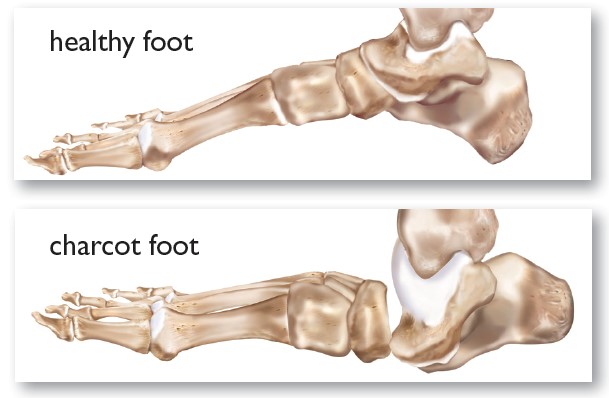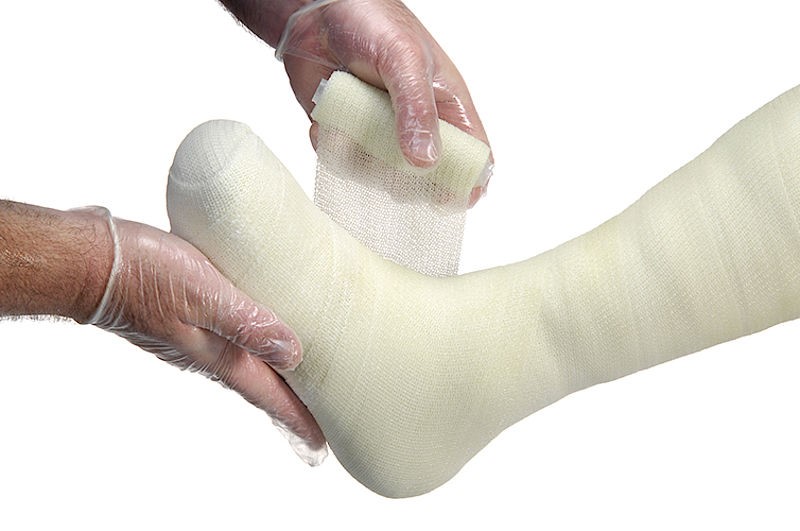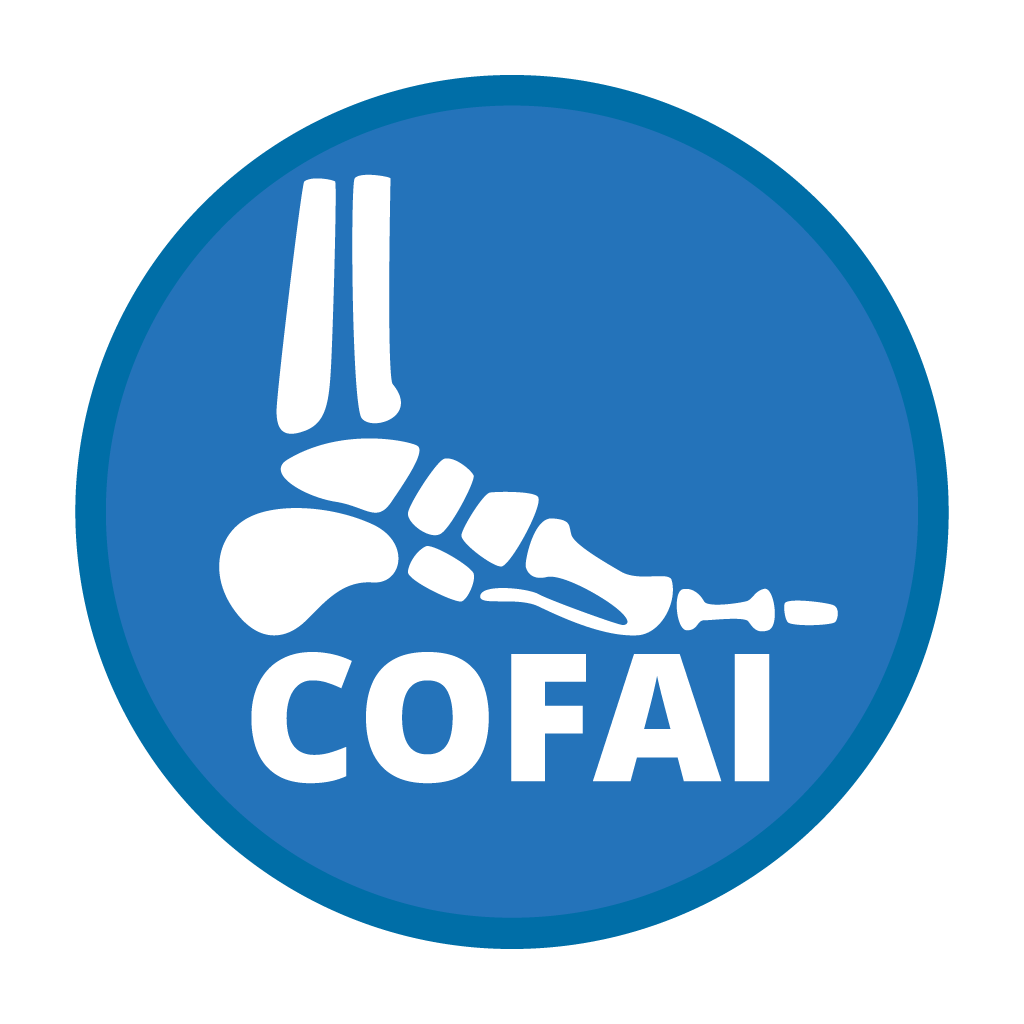
What is a Charcot’s foot?
Charcot foot is a progressive condition that involves the gradual weakening of bones, joints, and soft tissues of the foot or ankle. It is caused by peripheral nerve damage which leads to loss of sensation in the foot.As a result the patient suffers repetitive microtrauma of the ligaments,bones and joints which go unrecognized.This leads to deformity and loss of the normal foot anatomy.
What causes it?
The most common cause is Diabetes Mellitus.Other less common causes include leprosy, syphilis, poliomyelitis and chronic alcoholism.Regardless of the cause, the underlying pathology is as a result of nerve damage.
What are the symptoms?
One of the early symptoms of Charcot’s foot is swelling.Quite often this is mistaken for infection in patients with Diabetes and antibiotics is prescribed.X Rays are mandatory which can demonstrate destruction of the joints and loss of the arch leading to a flatfoot deformity.
In addition to swelling many patients present with pain,increased warmth and redness of the skin.Later on in the disease patients may develop a rocker bottom deformity leading to ulceration and infection.
How can I identify it?
Every patient with diabetes should have regular foot checkups by their Health care professional. Early diagnosis is the key to preventing unnecessary complications.Your family physician should assess your blood flow to your feet as well as any absence or abnormal sensation . If any index of suspicion of a charcot’s foot then further investigations would need to be done.These includes X rays,Blood tests and Doppler flow studies.
Is their any treatment available?
Early in the course of the disease immobilization in the form of Total Contact Casting would be the treatment of choice.This involves serial casting until the swelling resolves and the foot becomes stable.This usually lasts between three and four months.Your physician will determine the duration of your treatment as it varies from individual to individual.Once the foot is stable you can now be fitted into a custom orthosis/footwear in order to reduce the rick of future complications.

The diagram above is an example of Total Contact Casting. Layers of cast material are applied over the lower limb in order to hold the ankle stable.Within a week the swelling with reduce and another cast must be applied to accommodate the new shape of the foot.The frequency of cast changes reduce as the swelling reduces.At the end of the treatment the foot is examined to ensure it is stable and then placed in appropriate footwear.
Some patients unfortunately, present late with an established rigid deformity predisposing them to ulceration at the bottom of the foot.These patients need to be assessed by an orthopaedic surgeon and X rays and CT scans may be required.In many circumstances surgery may be required to correct the deformity.You will need to discuss with your surgeon the best option for you.
What do I need to do after treatment?
Diabetes is a lifelong disease and so too is the management of the conditions associated with it.Daily foot examination is required to look for the presence of cracked heels,dry skin and any evidence of impending ulceration.Liase with your health care provider as to the best product available.Fungal infections may also occur and these must be treated .Circulation and sensory evaluation must be assessed at least once a year.
